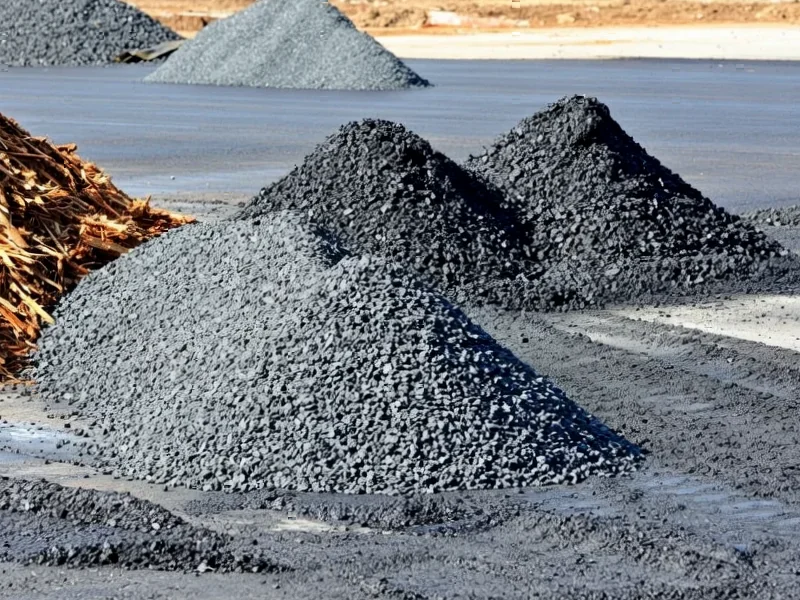According to Phys.org, U.S. tariffs on Canadian softwood lumber have escalated to 45%, including a recent 10% increase on lumber and 25% on engineered wood products. University of British Columbia forestry professor Harry Nelson describes this as pushing B.C.’s forestry sector into uncharted territory, with B.C. Premier David Eby calling it an “existential crisis.” The dispute centers on U.S. claims that Canada subsidizes lumber through its stumpage system, though Canada and trade panels have consistently rejected this argument. Canada has already paid approximately $10 billion in lumber duties to the U.S., with little expectation of recovery, while the industry faces unprecedented pressure from both tariffs and ecological challenges including fires and beetle outbreaks. This escalation represents a critical turning point in the 40-year trade dispute.
The North American Supply Chain Domino Effect
While the immediate impact falls on Canadian producers, the 45% tariff creates a dangerous domino effect throughout North American construction and manufacturing sectors. The U.S. housing market, already struggling with affordability and supply constraints, now faces even higher material costs at a time when mortgage rates are at multi-decade highs. American homebuilders who’ve relied on consistent Canadian supply for decades must now either absorb massive cost increases or seek alternative sources that simply don’t exist at scale. The interconnected nature of North American wood products means that secondary manufacturers in both countries—from truss fabricators to flooring manufacturers—will face supply disruptions and price volatility that could stall projects and increase consumer costs.
Structural Vulnerabilities Laid Bare
This crisis exposes fundamental structural weaknesses in Canada’s forestry strategy that extend beyond the immediate tariff dispute. The sector’s heavy reliance on the U.S. market—approximately 70% of B.C. softwood lumber exports go south—represents a critical strategic vulnerability. More concerning is the concentration of high-value manufacturing capacity near the border, where mills that should be most competitive are instead taking downtime. This suggests deeper issues with cost structures and operational flexibility that the tariff escalation has simply accelerated. The industry’s historical assumption that “guardrails” existed in the trade relationship has proven dangerously optimistic, leaving producers exposed to political and economic forces beyond their control.
The Human Cost in Rural Communities
Beyond the corporate balance sheets lies a more immediate human tragedy unfolding in forestry-dependent communities across British Columbia. Unlike urban centers with diversified economies, these rural towns often have 40-60% of their workforce directly employed in forestry or supporting industries. The Provincial Forest Advisory Council’s ongoing work on sector resilience must address the reality that contractors, trucking companies, equipment suppliers, and local businesses lack the financial buffers to weather prolonged mill closures. These are typically family-owned operations with limited alternatives, meaning job losses extend far beyond the mill gates and could trigger permanent demographic shifts as workers relocate for opportunities elsewhere.
Why Loan Guarantees Won’t Suffice
The federal government’s proposed loan guarantee program represents a classic case of treating symptoms rather than the disease. While providing temporary liquidity might keep some operations afloat, it does nothing to address the sector’s fundamental competitive challenges or market diversification needs. More critically, loan programs typically favor larger, established operators with existing banking relationships, leaving the most vulnerable contractors and small businesses behind. What’s needed instead are targeted measures that support workforce transition, encourage value-added manufacturing, and facilitate access to emerging markets in Asia and Europe where Canadian wood products could command premium prices rather than competing on commodity margins.
The Convergence of Ecological and Economic Pressures
What makes this tariff escalation particularly dangerous is its timing amid compounding ecological challenges. The mountain pine beetle epidemic, catastrophic wildfires, and changing climate patterns have already reduced the quality and quantity of harvestable timber in many regions. Producers now face the perfect storm of reduced fiber supply, higher production costs from degraded wood quality, and now prohibitive trade barriers. This convergence threatens to permanently reshape B.C.’s forest landscape, potentially accelerating the transition from a volume-based industry to a value-focused one—but at tremendous cost to communities and workers caught in the transition.
A Strategic Path Beyond Crisis Management
The solution lies not in temporary relief measures but in fundamentally reimagining Canada’s forestry future. This means accelerating the shift toward specialty wood products, mass timber construction, and bioproducts that leverage Canada’s technical expertise rather than competing on commodity lumber. It requires investment in manufacturing innovation that can process smaller-diameter and lower-quality timber into high-value products. Most importantly, it demands a coordinated federal-provincial strategy that treats forestry as a strategic national asset rather than a regional industry, with export diversification and trade diplomacy as central pillars rather than afterthoughts. The 45% tariff may be the shock that finally forces the systemic changes the sector has needed for decades.




